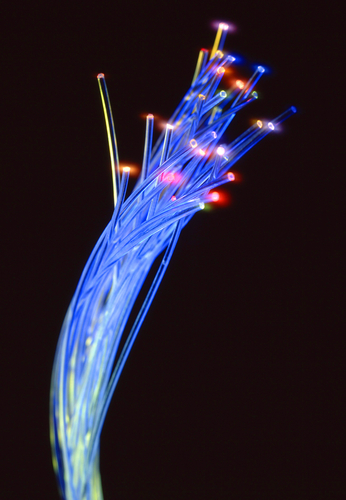 If you happen to be downloading a movie this weekend and wait longer than you like you’ll be happy to know MIT researcher Vincent Chan said that that replacing electrical signals inside the routers with faster optical signals would make the Internet 100, if not 1,000 times faster, while also reducing the amount of energy it consumes according to an interview on ComputerWorld.
If you happen to be downloading a movie this weekend and wait longer than you like you’ll be happy to know MIT researcher Vincent Chan said that that replacing electrical signals inside the routers with faster optical signals would make the Internet 100, if not 1,000 times faster, while also reducing the amount of energy it consumes according to an interview on ComputerWorld.
According to the article:
Chan’s architecture, which is called “flow switching,” establishes a dedicated path across the network between locations that exchange large volumes of data — from Silicon Valley to Boston, for instance. MIT explained that routers along that path would only accept signals coming from one direction and send them off in only one direction. Since the optical signals aren’t coming from different directions, there’s no need to convert them to electrical signals for storage in memory.
“If this can truly jack up Internet data speeds by 100 times, that would have a huge impact on the usability of the Net,” said Dan Olds, an analyst at Gabriel Consulting Group Inc. “We’d see the era of 3D computing and fully immersive Internet experiences come much sooner…. If this turns out to be practical, it could be a very big step forward.”
The downside to faster Internet speeds is greater cost but this past decade has shown users continue to tax broadband connections with newer and more data -intensive applications. There is no reason to think this trend will cease and we already know 3D, HD video downloads will consume tremendous amounts of bandwidth.
Over a decade ago I was at Lucent’s (before the Alcatel merger and Avaya spin-off) New Jersey headquarters for an analyst briefing where the major focus was on optical transformation. One of the major points which came out of this meeting was “Butter’s Law” which says that the amount of data coming out of an optical fiber is doubling every nine months and subsequently the cost of transmitting a bit over an optical network decreases by half every nine months. You can read more about this law here.
There has certainly been downward pressure on optical transmission costs as technology has improved. One wonders if this new MIT technology will throw this law out of whack requiring an update.





